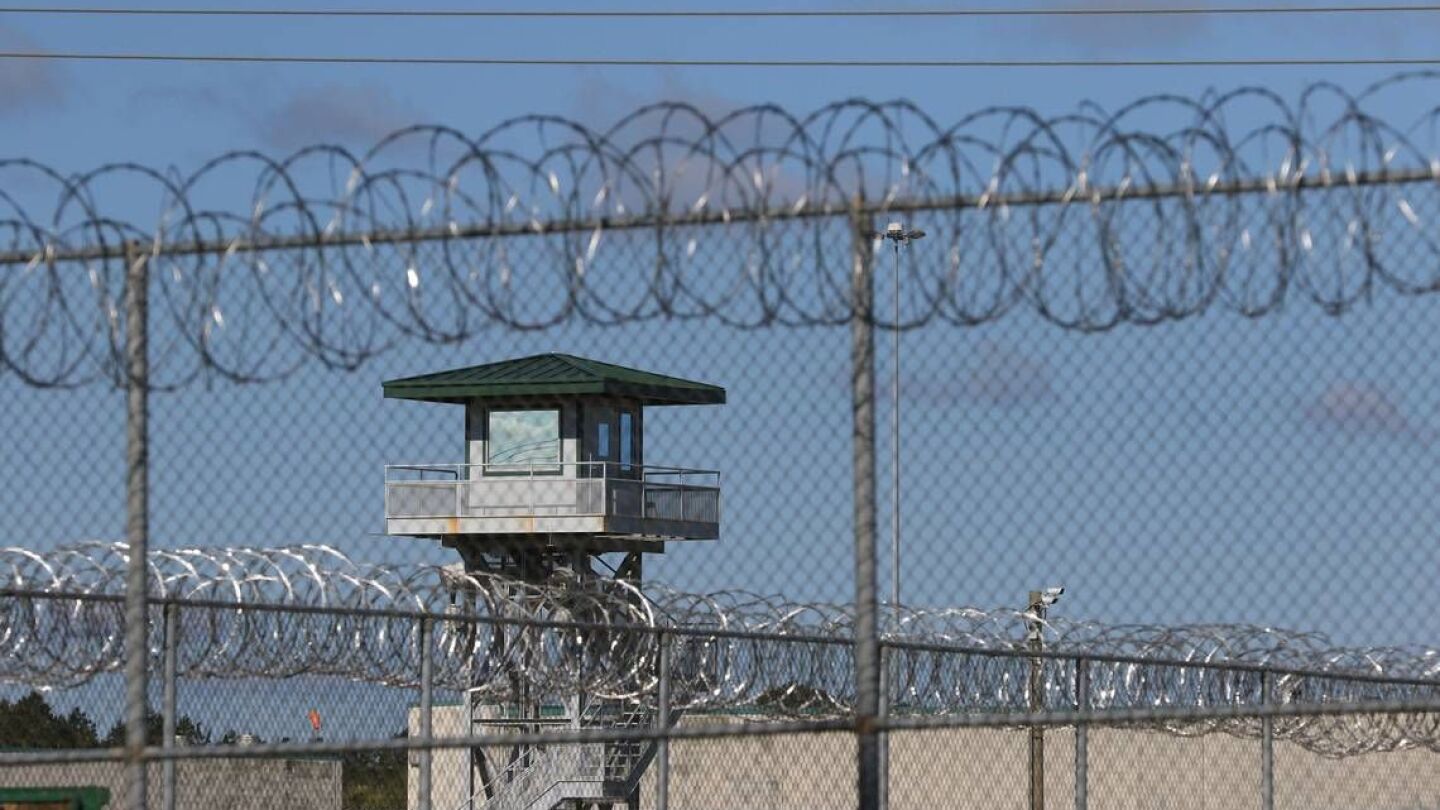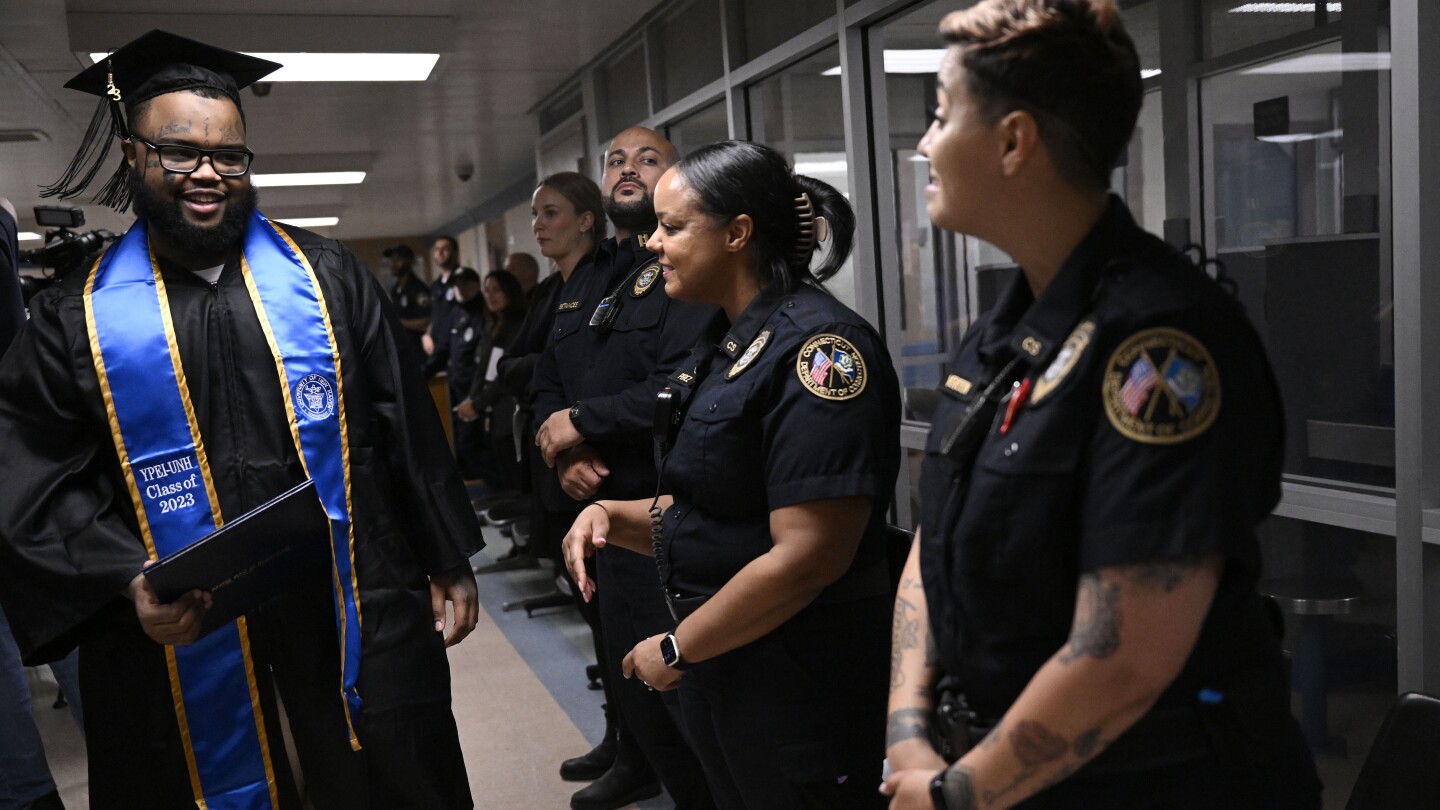Re-Entry and Recidivism
The Re-Entry and Recidivism section focuses on the challenges and strategies for helping former inmates successfully reintegrate into society while reducing the likelihood of reoffending. This directory provides articles and resources on effective re-entry programs, support services, and policies to lower recidivism rates. Understanding these concepts is vital for correctional professionals promoting rehabilitation and public safety. For more on inmate support, explore our section on Parole and Probation.
Adams County jail received $3.1 million from call fees since 2020 while failing to provide face-to-face visitation, according to the lawsuit
Hollywood’s latest “true story” turns a serial robber into a sympathetic character. For those of us who work in corrections, it’s not entertainment — it’s a professional headache
Why intensive, accountable treatment courts beat “probation as usual” and how agencies can target the right people, measure results and keep communities safe
“Making Reading Memories,” a Racine County Extension program, is intended to connect children with parents who are incarcerated and improve children’s literacy skills
CDCR’s Youthful Offender Program brings inmates ages 18 to 25 who committed more serious crimes, including manslaughter, to the camp to train in wildland firefighting
EDWINS hosted a dinner at Grafton Correctional as part of its culinary course, offered in 652 facilities nationwide
Brevard County Sheriff Wayne Ivey coordinated an inmate work crew to help catch a raccoon with a jar stuck on its head
KidsMates, a nonprofit focused on supporting children with incarcerated parents, has donated 5,000 books, games, and movies to federal prison visiting rooms in 23 states
The Athens-Clarke County Jail program aims to create pathways to gainful employment for inmates in their post-jail lives, which could reduce recidivism down the road
Alabama is one of five states that have joined a program called Reentry 2030 in collaboration with the Council of State Governments Justice Center
The council’s plan “lays out our road map to help transform the lives of people leaving prison and reentering society while making our communities safe,” the governor said
The Brown County Jail Garden was made possible by the support of the Green Bay Packers Give Back program
“Daughters,” filmed over eight years, features inmates who participated in a unique fatherhood program that prepared them for the emotional toll of a Daddy Daughter Dance
The STAR Center evaluates participants during incarceration or upon release to determine their immediate needs and what services are available to address those needs
Each year, around 250 inmates at Arizona State Prison Complex-Lewis will engage in a five-week art program led by facilitators experienced in trauma recovery
The new campus will house up to 72 juveniles awaiting trial, featuring state-of-the-art classrooms for career and technical programs to aid their transition into the workforce
A semi-truck trailer has been retrofitted into a mobile workshop where prisoners can get trained in technical careers and skilled trades using hands-on simulators
The changes are modeled after prison operations in Norway, where incarceration is considered less a tool for punishment than an opportunity for rehabilitation
In 2023, incarcerated students wrote to Los Rios Community College, criticizing the program for lacking proper counseling and teaching classes without books or computers
The mobile welding trailer has six welding stations for inmates within the mobile learning center; the trailer is also equipped with six virtual reality welding simulators
At the peak of the inmate firefighter program in 2005, there were 192 crews, or 4,250 inmate firefighters, CDCR says; now there are about 83 hand crews, or 1,760 participants
The Lima Symphony Orchestra performed at Allen Oakwood Correctional Institution to support rehabilitation through their “Healing Through Music” program
The E2E network, which was piloted at California State Prison, Solano, connects inmates with employers and helps them to secure employment before they are released
The event inside the Correctional Training Facility showcased 19 vehicles, along with two motorcycles, from New Arrivals and Aztec Legacy
Renowned chef Fernando Ruiz, a three-time Food Network champion, is leading an eight-week culinary training course for inmates at the Penitentiary of New Mexico
While the Monroe County Sheriff’s Office Animal Farm is home to mainly confiscated animals, the farm also serves as a unique criminal justice reform program for inmates
Virginia ranks at the top for lowest incarceration rates while Mississippi had the highest increase, according to data from the Bureau of Justice Statistics
The Laramie County Sheriff’s Office program allows inmates to get outside of the jail facilities, while also giving back to the community
Through a $1.5 million grant, incarcerated students at MacDougall-Walker Correctional Institute can take classes, such as philosophy, criminal justice, mathematics and more
The most effective programs, in my view, are those in which staff members confront the inmates about the problems and behavior that got them locked up
The episode followed three inmate workers at State Farm Correctional Complex who shared insights about the valuable re-entry skills they are gaining in agribusiness
An old medical warehouse will now be used to teach Pulaski County inmates skills from lawn care to welding, in hopes of reducing recidivism
The corrections director said sweat lodges are a culturally specific way to address the spiritual needs of indigenous inmates — and hopefully reduce recidivism
MOST POPULAR
- Lower recidivism rates reported in several states in 2023
- Why ex-prisoners struggle to successfully reintegrate into society
- Deterring further violence and unnecessary disruption within ODRC maximum-security facilities
- Ga. Department of Labor launches new program to support reentry for incarcerated individuals
- Hawaii’s new corrections department aims to give inmates a fresh start



































